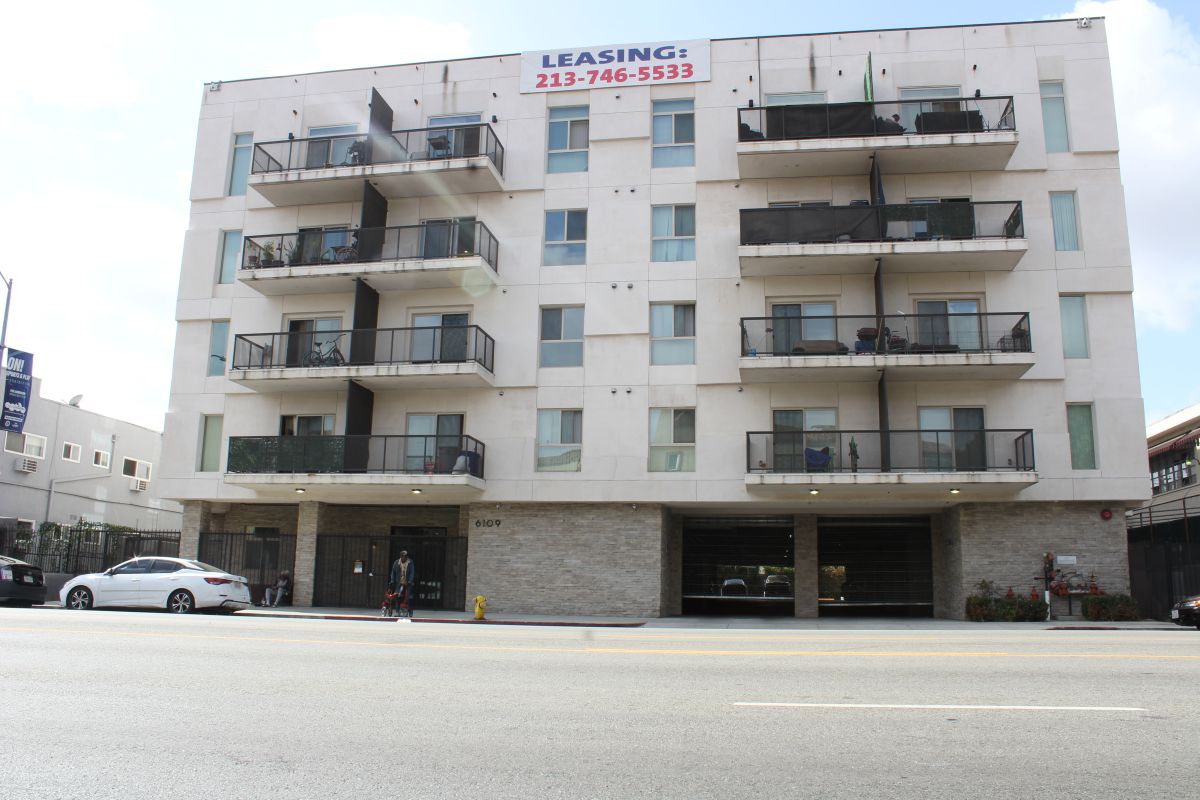Supporters Call SB 79 a Breakthrough for Housing and Climate. Critics Warn it Will Fuel Displacement and Erode Local Control.
With Gov. Gavin Newsom’s signature, California moved to rewrite how neighborhoods grow: SB 79 legalizes mid-rise apartments near major transit stops, overriding single-family zoning in key corridors. Backers say it will unlock more affordable homes, reduce emissions, and connect people to jobs and services, while critics warn that it could sideline local planning and fuel displacement unless safeguards are in place.
Newsom’s action marks one of the state’s most sweeping housing measures in decades, clearing the way for denser housing near rail and high-frequency bus lines. In Los Angeles, housing advocates are celebrating a long-awaited opening for homes near transit. In San Diego’s Linda Vista neighborhood, however, residents are bracing for what that change could look like on single-family blocks.
Lorri Freitas, a Linda Vista resident, says she’s already seen how rapid zoning changes play out.
“Developers were really taking advantage of the situation,” she said, recalling the city’s bonus accessory dwelling unit (ADU) program. “This wasn’t regular homeowners putting a few ADUs in their backyard. One of our members has a three-story, 18-unit project right up against his fence.”
Now she worries those same dynamics will play out on a bigger scale.
“If you’re within that half-mile radius of transit and you’re in a single-family neighborhood, you could have a six-story apartment building come up next to you with nothing you can do about it,” Freitas said, voicing her fears about how the new zoning rules could affect established neighborhoods.
Geoffrey Hueter, chair of Neighbors for a Better San Diego, said early projects will likely cluster in lower-income single-family areas because commercial parcels are expensive and existing multifamily zones are excluded. He also criticized the law’s “as-the-crow-flies” transit mapping, which ignores canyons, freeways, and dead ends that can stretch a “half mile” into a mile-plus on foot.
A Metro K Line train approaches a station in South Los Angeles. Photo by Stephen Oduntan
What SB 79 Does
State Sen. Scott Wiener’s office frames SB 79 as a practical step to tackle California’s housing shortage by legalizing denser development near major transit hubs.
“The land surrounding major transit stops is some of the most important places we can be building housing,” said Erik Mebust, Wiener’s communications director. “It’s sustainable, defensible from wildfires, and connects people to jobs, health care, and services.”
Supporters also describe SB 79 as a housing and climate measure with safeguards to curb displacement.
“At the core of California’s homelessness crisis is the simple reality that we do not have enough affordable housing,” said Adam Murray, CEO of Inner City Law Center, a co-sponsor. “By signing SB 79, Governor Newsom has taken decisive action to open the door to more affordable homes where people need them most — near jobs, schools, and transit.”
Unlike earlier bills such as SB 35, which focused on permitting, SB 79 changes zoning itself. Cities must allow more homes near rail and high-frequency bus corridors, with limited flexibility to shape implementation. Most provisions take effect July 1, 2026, with phased timelines and deferrals in some areas. The law prohibits the demolition of rent-controlled buildings and requires at least 13% of new units to be reserved for low-income residents.
Hueter remains skeptical: “If you’ve already zoned for housing and the housing isn’t getting built, then your problem isn’t zoning.”
YIMBY Action: ‘This Won’t Happen Overnight’
Advocates in the “Yes in My Backyard” (YIMBY) movement argue that SB 79 opens up opportunities in neighborhoods that have long been off-limits to lower-income residents.
“Nothing is going to change overnight,” said Leora Tanjuatco Ross, California director for YIMBY Action. “Every city will have the opportunity to write its own plan for how to allow more homes near transit. The deadline for that is July 1, 2026.”
She added that densifying around transit helps reduce emissions and address the state’s cost-of-living crisis.
California YIMBY called the measure “the most significant housing reform ever signed into law in California.”
Tenant Advocates Warn of Displacement
Tenant rights groups are bracing for what they believe will be a wave of displacement.
“This is a developer real estate bill, not a housing bill,” said Larry Gross, executive director of the Coalition for Economic Survival. “In Los Angeles alone, 90,000 rent-controlled duplexes now have a bullseye on their backs because this law opens the door for developers to target these properties for higher-priced luxury housing.”
Gross said tenant groups will push for stronger protections, including the repeal of the Ellis Act and Costa-Hawkins.
Hueter echoed the concern: “This law won’t increase how much gets built — just where. Developers only build as many homes as they can rent.”
Cities Push Back
City officials have also criticized the bill.
“For years, cities have embraced transit-oriented development and are actively planning for housing near transit,” said Jason Rhine, senior director of legislative affairs for the League of California Cities. “SB 79 defies those same housing plans, with no requirements to force developers to actually build housing near transit. Our residents are demanding affordable housing, and this measure falls short.”
A Debate That’s Just Beginning
With SB 79 now law, California has cracked open single-family zoning near transit — setting off one of the state’s most consequential housing experiments in a generation. Supporters see a chance to break the logjam of exclusionary zoning and build more affordable, climate-friendly housing. Tenant groups and city leaders fear it will deepen displacement pressures and undermine local planning.
“The state has decided how communities can be shaped without actually understanding anything about those communities,” Hueter said. “It’s frankly undemocratic.”

